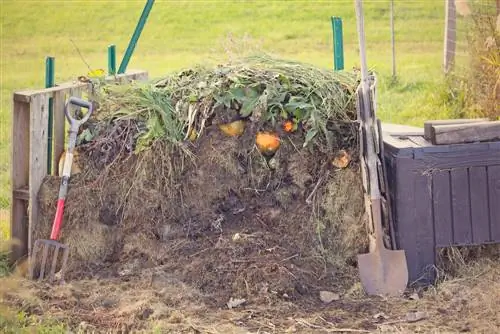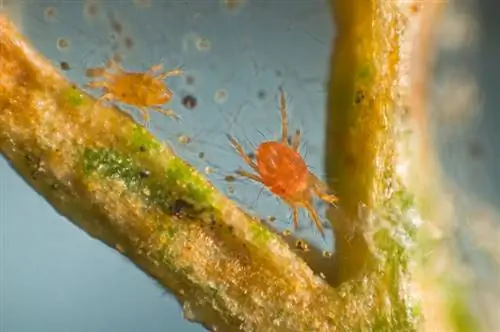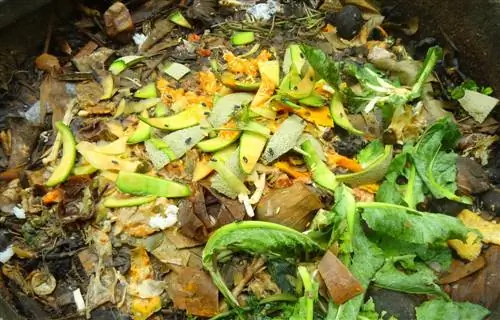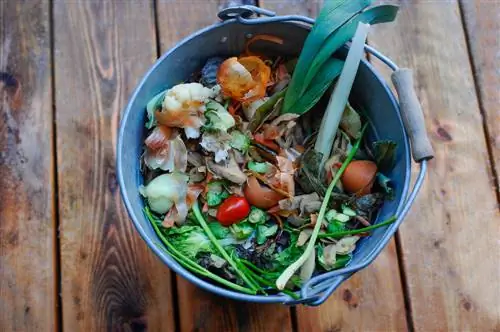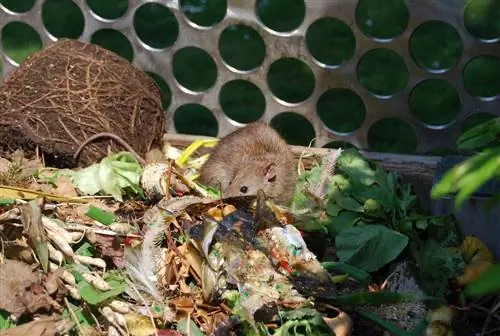- Author admin [email protected].
- Public 2023-12-16 16:46.
- Last modified 2025-01-23 11:22.
A well-decomposed compost substrate takes time. Sometimes it happens that the breakdown of organic waste takes too long or does not work properly. In these cases, an activator helps to stimulate the soil fauna. However, the basic conditions should also be right.
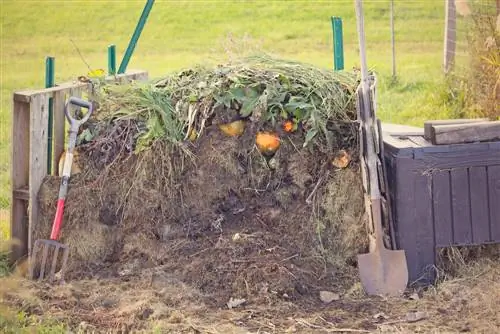
How to speed up the composting process?
To speed up the composting process, earthworms, plant manure or yeast solutions can be used. But also pay attention to optimal basic conditions, such as a shady location, balanced materials and regular mixing of the compost heap.
Earthworms
The most natural form of compost accelerators are earthworms because they effectively decompose the organic material. Their excretions improve fertility and ensure a loose structure. Collect the animals as you dig up your beds and place them on the compost. Alternatively, the compost worms can be lured into the substrate if you offer sugary material such as overripe fruit.
Plant cessation
Fern fronds, nettles, valerian and comfrey provide ideal material to activate the decomposition processes. Collect fresh herbs and pour lukewarm water over them. A conventional bucket is suitable as a fermentation container. In a warm place the first bubbles will appear after a day or two. Fermentation is over as soon as there are no more bubbles to be seen. Rock dust counteracts the formation of odors. The plant manure is mixed with water in a ratio of 1:10 and poured onto the compost.
Yeast solution
A sugar-yeast solution is considered an efficient activator. Pour ten liters of lukewarm tap water into a bucket and add a cube of fresh yeast or a sachet of dry yeast. Stir the mixture vigorously and let it steep for about a quarter of an hour. In order for the microorganisms to work and multiply, pour a kilogram of sugar into the solution. Once the ingredients have completely dissolved, pour the accelerator over the compost substrate. It develops its optimal effect at temperatures of 20 degrees.
Tip
Make sure that the organic waste does not get too wet. You can also reduce the amount of water while maintaining the same dosage of ingredients.
Notes on usage
In principle, you can pour the yeast water onto the compost at any time if it is not working properly. For quick and even composting, it is recommended to start the treatment in the early phase. Once the compost heap has grown by 20 centimeters, you can add the mixture.
Selection of location
No activator works effectively if the basic conditions are not right. The location plays an important role. Place the compost bin in a shady spot under a tree. There is no risk of the substrate drying out too quickly. At the same time, it must be protected from wind and weather to prevent waterlogging. Compost containers with an open bottom ensure that liquid can drain away and earthworms and microorganisms find their way inside.
This has a positive effect:
- shredding organic waste
- Layering materials with opposite properties
- moist and dry as well as nitrogen-rich and low-nitrogen composition ideal
- mix layered waste regularly

